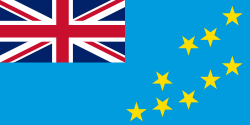
Motulalo is the largest islet of Nukufetau, Tuvalu. [1] [2] The traditional history of Nukufetau recalls that in order to protect the atoll from raiders from Tonga, Tauasa, an aliki (chief), was given Motulalo. [3] Tauasa would pull up coconut trees and throw them at the raiders. [3]
During World War II the American forces built an airfield and a deepwater wharf on Motulalo. [4] After the war the airfield was dismantled and the land returned to its owners. [4]
